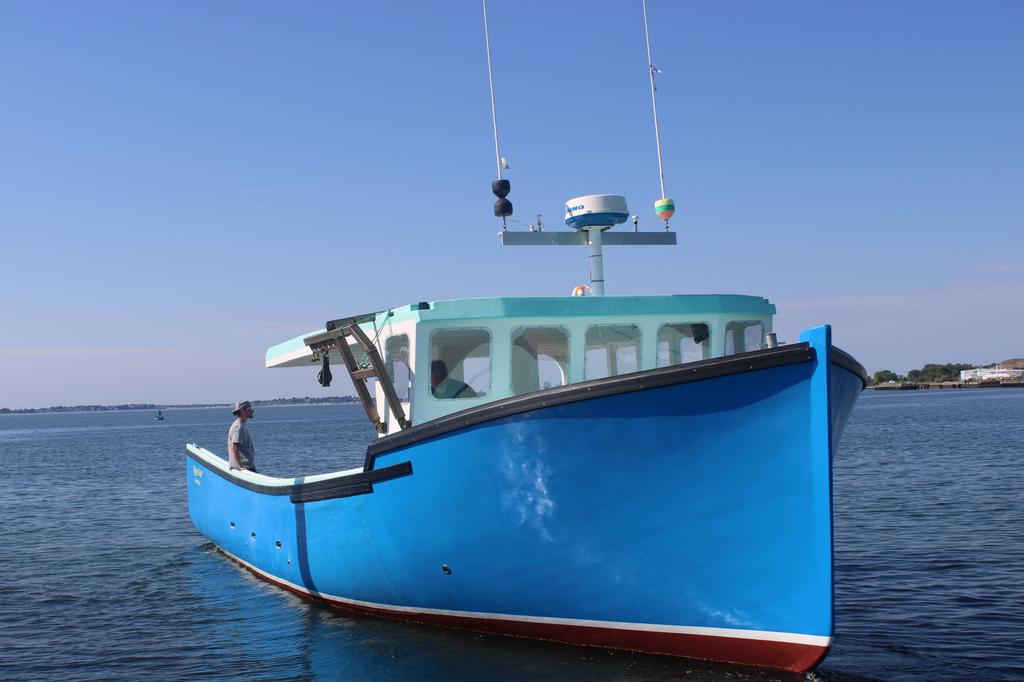No question about it, when the Happy Trails, a 47-foot Atkinson Novi lobster boat, left Cape Codder Marine in Lynn, Mass., at the end of August for Sandwich, Mass., it was a different boat than what had arrived in March.
Happy Trails belongs to Willy Ogg of Sandwich, a Cape Cod fisherman who traded his previous boat for the Novi, even though it needed work at the time. Ogg installed a 2-year-old, 280-hp, continuous duty C7 Caterpillar and “did his best to try and keep up” with the problems, says Cape Codder Marine’s Bob Dobias, “but when it’s that out of shape you are always just kind of chasing the trail.”
Floors had fallen in, and in some areas there was no plywood under the fiberglass. Bulkheads were gone, deck beams had rotted, the wheelhouse roof was caving in, and the hull was sagging to such an extent that when it was being rebuilt Dobias could see “two more inches of the stem of the rudder post coming out of the bottom of the hull.” It was all “because everything had let go,” says Dobias.
The goal was to rebuild Happy Trails into a like-new condition while lengthening and widening the hull, which had been built as a 42-footer around 1985. But the boatyard needed more room to do the work. Then the Economic Development Industrial Corp. in Lynn stepped up “and helped us into a space that was right on the water,” says Dobias.
“We started the project by ripping the entire thing down to a shell.” The deck, the deck beams, the wheelhouse and all but two bulkheads were removed. The hull was set up on cross members, supported by boat stands.
“We cut through it on each side of the keel to the middle of the boat,” Dobias says, “and widened it by 36 inches in the stern” to 13 feet 7 inches. Then a new 5-foot 6-inch ducktail extension was added, which pushed the overall length to 47 feet 8 inches.
The hull was re-cored with Airex and stiffened with heavily fiberglassed polyiso foam bulkheads. Like most Novi boats, there was a break in the sheer line at about the hauling station, where it started dropping 15 inches.
Today, the new sheer is 12 inches higher and the new foam deck is 12 inches higher than the old deck. Thus, instead of the scuppers being near the waterline they are appreciably above it, and there’s more storage area below deck. Dobias and his crew were able to “fit a really big muffler down below” when converting the engine from dry to wet exhaust.
The new wheelhouse was built out of Airex foam. “It’s large and open with a long roof overhang for the crew.” The only wood in the Happy Trails is pressure treated deck beams, which is probably why Dobias is pretty confident claiming that the “Happy Trails should last forever.”







